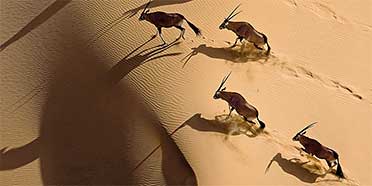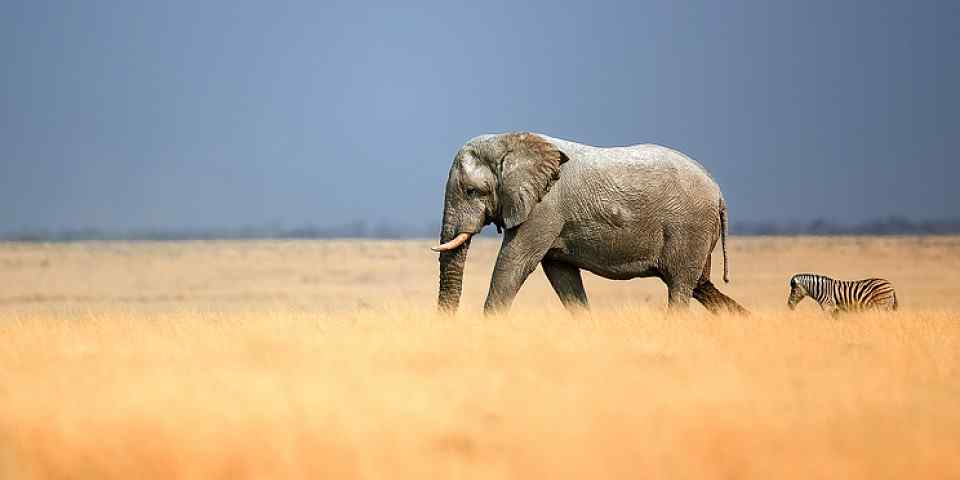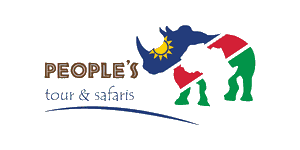 CH
CH
Email Pierre | 50-65 years of age | Experience level: first safari
The country is often fenced and you cannot drive offroad as you like. A very nice and unique country but very civilised. Adventure is easy to plan.
 NL
NL
Email Emiel de Lange | under20 years of age | Experience level: over 5 safaris
A Harsh Paradise
I have visited Namibia multiple times, most recently for a duration of 4 months. I am certain to return. Its many sensations and moods often return to my thoughts accompanied by a certain happy nostalgia. Namibia is an impressive country, raw and wild; it rewards further exploration but is also immediately beautiful. If you are anything like me, you may find yourself with a new look on life, certainly if this is your first visit to Africa.
Certainly if this is your visit to Africa, there is no better destination. In Namibia you have vast wildlife, fascinating culture, beautiful landscapes; from lush wetlands to parched deserts, and unlimited adventure. Importantly it is very safe, crime is low and the politics are stable, the infrastructure is remarkably good and everything is well run. Tourism is well established in most areas and is a vital part of the economy, but at the same time it is geared towards low volume-high revenue, meaning you are unlikely to see crowds.
Most visitors to Namibia follow the same circular route, clockwise or anti-clockwise. This route typically takes two to three weeks and covers a lot of the incredible must-see sights and areas and can be done in a rented 2WD drive car. I can not emphasise enough how beautiful and varied this country is; there is far too much to cover in three weeks, but this standard route is perfect in that it pays sufficient attention to the highlights and still allows a great sense of adventure though Im sure one would always wish it had been longer.
To summarise, the main places visited on this circuit:
The Namib desert, which is a unique ecosystem of endless shifting sand dunes and mountains. There is plenty opportunity for walking and to drive along the long gravel roads is awesome. One of the most astonishing natural features on earth is the Sossusvlei and the Deadvlei. The former is a green oasis among the dunes, and nearby the latter is a photographers dream: a clay pan dotted with dead trees.
Swakopmund, a quaint germanic seaside town surrounded by sandy flats. A tourist hub from where it is possible to go on many excursions to interesting birding sites, seal colonies or adventuring in the desert.
Damaraland, a beautifully arid region dotted with rocky hills and villages. It is possible to track down here the famous desert-adapted elephants and there is a large population of free-roaming black rhino. Amidst the other wildlife and still subsisting are the Damara people who graze their cattle. Twyfelfontein is Namibia's only world heritage site (so far), an ancient rock art site.
Etosha, the most famous national park offering the 'classic' safari experience in a rather unique setting. It is dominated by a vast clay pan, the southern edge of which is scattered with waterholes. Particularly in the dry season you will see vast herds of animals waiting to drink as predators such as Lions block their paths. Ive seen incredible amounts of lions here and Rhinos are almost guaranteed at the Okaukuejo waterhole.
A lot of people also visit a reserve called Okonjima. This is the home of the Africat foundation which works to conserve Cheetahs and Leopards. You will almost certainly see these two cats if not truly 'wild'. Ive recently decided no longer to recommend this place due to various ethical issues I became aware of during a volunteering stint.
There are countless other things to see and visit, but I will also summarise here the kost significant regions:
Kaokoland, a large desert area inhabited by the nomadic Himba people. Incredibly remote and rugged, wild, it shouldnt be attempted by unexperienced 4x4ers and certainly not solo. Expect to find vast sandy valleys lightly grassed and not another soul for miles.
Caprivi, a small region crossed by many rivers and characterised by swamps and forests. It is densely populated by a variety of peoples living in a largely traditional manner, but still wild and untamed and there is a large population of Elephants.
Kalahari, a vast semi-desert with sparse but interesting wildlife. Large portions are monotonous and uninteresting but some areas are fascinating. The Khaudum park has much wildlife and is remote and bushmen in the area can demonstrate their skills and way of life.
Fish River Canyon, the world's second largest canyon. Breathtaking and challenging hiking.
Finally, a very small place which I feel deserves more attention is the Mundulea reserve. This is a reserve being restored to its natural potential, and effectively conserves a great deal of endangered species. Visitors here will be received exclusively and be given fascinating lessons about the local nature.
It is easily possible to reach the vast majority of these places in a normal car, and once there tourists of all kinds are catered for. One can have great luxury with expert guides and astonishing views from your room, or one can experience the wild rhythms first hand while camping - of course intermediates are also possible.
Namibia is a truly beautiful country with great variety of things to see and do. It is easy to travel here and there are many options available for accommodation. I wholeheartedly recommend it to anyone.
Wildlife: Seeing huge herds of Elephant (over 300 strong) on the move through open grassland was a real highlight. At the time we visited there were only small groups of other game, but these were very rewarding viewings.
Scenic beauty: Beautiful grassland, ant mounds, the clear Kwando River and sunsets are all to be highly recommended.
Bush vibe: Highly recommended on this basis. The camping along the river really puts you amongst the game. A lot of the best viewing is right from the camping areas. The relative lack of tourists also creates a real bush vibe.
Birding: Great bird watching in general – numerous species (possibly due to such a diversity of habitats in a small area). Highlights from our trip include different species of bee-eaters, Malachite Kingfishers, Fish Eagles, Bateleur Eagles and many types of waterbirds.
From the Etosha in the north to the dunes in the south and from the Kalahari in the east to the skeleton coast in the west I found this to be an amazing country with great friendly people and so many experiences
There is much to see and to do in Namibia. Abundant wildlife, in national parks and gamefarms, but also roaming free in Damaraland and Kaokoland in combination with beautiful sceneries. There is a great choice of accommodations. Campsites, self catering, guestfarms and lodges (basic to very luxurious).
In the coastal area (Walvisbaai, Swakopmund) you can enjoy f.e. Scenic flights, quadbike tours, sandsurfing, "gogga" tours (looking for the little 5) or dolphincruises.
 FR
FR
Email mimi785nono | 20-35 years of age
Namibia is definitely a place to visit soon, before his beauty attracts more people and become a "tourist destination" like South Africa. Namibia is wild and beautiful. First time I was there (in 2005) it was like we were the first persons to land here, we sometimes drove hours before seeing another car. This is what I loved about this country, the feeling of "discovering" the place.
Went there in 2003 with my buddy from Simonskloof. Super weather condition (not too hot) and due of his expert knowledge from the area (he lived in Namibia for 5 years), we had an amazing time.
Namibia is very interesting from a geological perspective and there is a very good chance to see wild animals almost everywhere. It's worth to go there.
The countryside is so beautiful and amazing.
I strongly can recommend Namibia as a holiday destination.
Looking forward to go back in a few years.
Endless desert to endless sea
After driving for days through beautiful but scorching desert-scapes, we crested a dune and were chilled by a breeze coming off the dark blue Atlantic. This is an isolated, beautiful, and rarely-visited part of the world. In Namibia you can see big game as in other African countries, but also explore the desert and drive for miles up the Skeleton coast without seeing another person. They also have the best steaks--wild game or beef--of any other safari destination.
 NL
NL
Email karst blijham | 50-65 years of age
Stretched desertly landscapes. No wildlife boundaries. Beautiful light in the morning and evenings. Strange nature phenomena: petrified forest, Brandberg, Twyfelfontein, Fish River Canyon, Kakoa Veld)
 US
US
Email ~lustedtowander~ | 35-50 years of age
Namibia has a desolate beauty - a land of windswept sand, wild ocean, and vast rocky canyons.
Namibia is such a unique travel experience! Remote outposts house delightful German bakeries. Desert wastes hide elusive elephant herds. Cape fur seals birth pups in a cacophony of noise and stench and life. The vast white pans of Etosha in contrast with lush wetlands of the Zambezi Region offer stunning wildlife encounters.
Community based tourism is flourishing here. Local groups are represented in management decisions, and profit directly from tourism income. There are well-appointed local camps and cultural tours throughout the country. These offer an intimate look at local habitat as well as traditional cultures, rituals and wisdom.








